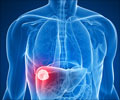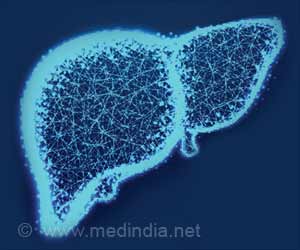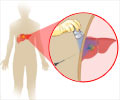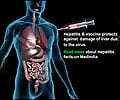New models were found to help predict liver cancer after successful hepatitis C virus (HCV) treatment, said new research.

‘The proposed scores potentially represent a useful clinical tool to help inform patients about the risk of developing hepatocellular carcinoma (HCC) after hepatitis C virus (HCV) is cured.’





Important statistical work was presented by the French group using data from subjects with biopsy-proven compensated cirrhosis from the French ANRS CirVir prospective cohort of patients. They aimed to identify specific longitudinal profiles associated with patients likely to develop HCC after HCV eradication according to serum alpha fetoprotein (AFP) and routine serum biomarkers (gamma-glutamyl transferase [GGT], alanine aminotransferase [ALT] and aspartate aminotransferase [AST]). In this cohort, a total of 142/717 patients with HCV at baseline and 47/413 who achieved SVR developed HCC, over a median follow-up period of 74.2 months. Among those who achieved SVR, the researchers identified two distinct types of patients at an elevated risk of developing HCC: one cluster with elevated serum parameters (n=95; 13.7% HCC incidence) and one with impaired liver function (n=109; 15.6% HCC incidence).
A third patient cluster, whose AFP and biochemical marker levels tended towards normalization, had a lower incidence of HCC (n=228; 7.5% incidence). Examining the pre-SVR population also showed clusters of patients with either a globally worsening liver function (n=198; 26.8% incidence) or a trajectory of increasing levels of AFP and serum biomarkers (n=190; 25.3% incidence). Again, a third cluster of biomarker levels that were favourable and stable overall had lower rates of HCC (n=329; 12.5% incidence; p<0.0001 vs the two other clusters).
"These analyses, based on novel statistical methods, suggest HCC surveillance can be refined and improved in order to tailor patient management to achieve optimum outcomes and increase cost-effectiveness," explained presenter and study lead Dr Pierre Nahon of Assistance Publique - Hôpitaux de Paris, Hôpital Jean Verdier, France.
In practical terms, better knowledge of who is most at risk of developing HCC could have an important impact on how screening programmes are implemented. Bringing us close to this goal, both the research team from France and another from Egypt presented potential scoring systems to achieve this goal. The ANRS C022 HEPATHER study used data from a large hepatitis B or C cohort, selecting 7,752 individuals with chronic HCV who were HCC-free, had no detectable hepatitis B virus antigens, and had achieved an SVR 12 weeks after DAA treatment.
Advertisement
The team then developed an HCC risk score using these variables, enabling stratification of patients into three groups according to HCC risk level (high, intermediate, low) at 1 and 3 years post-treatment. The HCC risk score was found to have a good predictive performance; most individuals evaluated (76.5%) were in the low-risk group at 3 years, with an HCC incidence of <1.5%. "These results may allow us to target our surveillance towards those at highest risk during the first 3 years after SVR," said Professor Nathalie Ganne-Carrié, also from Assistance Publique - Hôpitaux de Paris, Hôpital Jean Verdier, France, who presented the study findings at ILC 2020. Working to the same goal, researchers from the Egyptian Liver Research Institute and Hospital undertook a prospective study in which 2,326 patients with chronic HCV infection and advanced hepatic fibrosis or liver cirrhosis (F3 or F4) who achieved an SVR were followed for an average of 24 months (range 12-45 months).
Advertisement
The 2-year cumulative incidence of HCC in these groups was 2.0%, 4.5%, and 10.3%, respectively. If validated, say the researchers, the simple scoring system could help to individualize HCC screening of HCV-infected patients after successful DAA treatment. "These three studies reflect the complexity of understanding hepatocarcinogenesis and refute the idea that cure of HCV is equal to eliminating the risk of liver cancer," said Dr Jordi Bruix, of the Hospital Clinic of Barcelona, Spain, and EASL Governing Board member.
"These data also reinforce the importance of implementing HCC screening programmes in DAA-treated patients and the need to reinforce research efforts to identify the causes of liver cancer development despite cure of HCV."
Source-Eurekalert















